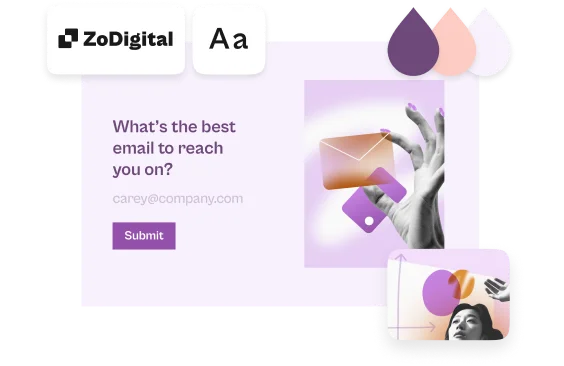6 tips to encourage people to respond with video
Need a little help getting people to submit a video response to your form? While there’s no way to guarantee video responses, there are some things that you can do to help respondents feel more comfortable getting in front of their camera.
When you use the video answer option, respondents have the option to send a video, or text response. By giving respondents the option to respond by video, you'll get more valuable insights from your customers. It'll make it easy for them to answer your questions and speak from their mind. Read on for some tips on how to give people that little extra nudge to answer your question with a video.
Video answers are available on all Growth plans. Learn more about our Growth plans here.
1. Set an example
When you add a video answer option to your form, are you asking for it in a video? Set an example for your respondents by being on camera and showing them that you’re in it together. If they see you on camera, they’re more likely to feel comfortable being on camera too. Learn more about how to add video questions to your form here.
Also consider your presentation and things like your outfit choice. Are you in a suit and tie, or your favorite t-shirt? If you create a relaxed environment, you’ll seem more down to earth and help encourage people to respond with a video.
2. Consider your tone of voice
How you speak and the words you use can set the tone of your question. If you’re using formal language, it can be a bit daunting to respond with a video. If you’re reading from a script, it might not feel or sound natural. Imagine that you’re talking to a friend, and keep it light and easy going. Don’t worry about a few umms and ahhs here and there—we all do it. If you really need notes to help guide what you’ll say, stick to bullet points instead of a full-on script.
3. Explain who'll see the video
Let people know who'll see their video answers. Will the videos be for internal use only, or will they be shared publicly? Giving people a heads-up on who'll see their video answers gives them the opportunity to adjust their delivery and presentation according to the audience. Maybe they won’t need to run that comb through their hair after all.
4. Give context
Explain why you’re looking for a video instead of a text response. If they see the value of providing you with a video over a text response, it could give respondents that extra push they need to send you a video. You’ll also get extra empathy points if you’re explaining why you need a video while on camera—I mean, who wants to say no to your face?
5. Practice and re-record
Respondents don’t always realize that they can practice and re-record their videos before hitting submit. So let them know! This will take some of the pressure off so that they know they don’t need to get it right the first time (or the second, or even the third).
6. Start with a low-pressure question
You can help people feel more comfortable and get the hang of responding on camera by starting with an easy question. Below are some examples of low-pressure questions that you can use:
- Could you please provide a short introduction to yourself and your business?
- What's your job role and what do you do?
- What do you like most about the product?
- What motivated you to make this purchase today?


